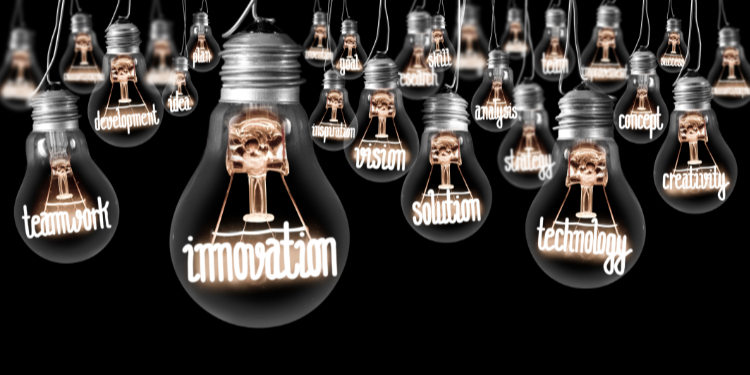Water — The Main Ingredient
At various points in my career, I have heard the argument that freshwater aquaculture makes more sen...

A recent article in Hakai Magazine on “A Short History of Aquaculture Innovation” provided a select list of innovations that allowed significant steps forward for global aquaculture. Among others, the list includes rope and raft culture of oysters, the use of brine shrimp Artemia in hatcheries, development of the Oregon Moist Pellet, sex reversal technology for tilapia, the intensive shrimp hatchery techniques developed by Motosaku Fujinaga, and family-based breeding programs for Atlantic salmon in Norway. Of course, there are many more innovations to add to this list. Induced breeding with carp pituitary extract, followed by the introduction of synthetic hormones, and adoption of high-health SPF shrimp seed are a couple of other examples that come quickly to mind.
Every aquaculture sector and producing country has their own history of innovation, with landmark research findings and technology development pathway, led by local pioneers and leading-edge producers. For development of a new species, the research and innovation follows a similar sequence, with work on spawning and larval rearing first, followed by basic production practices, nutrient requirements and diet formulations, water quality requirements and diseases and health management.
These early innovations and many others have contributed to tremendous growth in aquaculture since the 1980s. So far, this growth has kept pace with needs but the challenge to meet the seafood demands of 10 billion people by 2050 is daunting, and we will need to produce more seafood with a smaller footprint. Adverse environmental impacts, resource scarcity, and climate change will challenge the capacity of aquaculture to meet seafood demand while staying within planetary boundaries.
With the innovations of the 20th century as a foundation, aquaculture innovation continues to be vibrant and exciting, with considerable efforts being made in the main domains of production. Many innovations have been developed in the basic sciences and engineering and then found application in aquaculture.
It has only been in the last twenty years that domesticated varieties of some of the main culture species have come available. Genetic improvement programs for Atlantic salmon, tilapia and Pacific white shrimp have produced varieties with superior culture performance potential. Genetic linkage maps, SNP markers and high-throughput genotyping now allow for more precise genomic selection. The potential for application of genome-based biotechnologies such as CRISPR-Cas9 genome editing in aquaculture is considerable but has yet to be realized, although the technology is still quite recent.
In the area of nutrition, research and development into alternatives to fishmeal and fish oil continue, with DHA canola and meals and oil from algae, yeast, bacteria and insects leading the charge. Research is quite active in functional feed ingredients, including immunostimulants, enzymes, organic acids, phytochemicals, probiotics and prebiotics. There is also increasing appreciation for the role of the intestinal microbiome in efficient feed utilization and animal health.
The holistic “One Health” concept that simultaneously addresses animal, environmental and consumer health is taking hold. In brief, maintaining optimal conditions in production is the best preventive approach to avoid disease. An appreciation of the issue of anti-microbial resistance has led to the search for alternative therapeutics and better diagnostic techniques. The value of vaccines has long been demonstrated with Atlantic salmon farming and is now being applied to other species. RNA interference nanoparticles have been shown to protect shrimp against white spot virus, raising the possibility of a vaccine for shrimp. Bacteriophage therapy to control bacterial diseases in aquaculture is another emerging control option.
Innovation in grow-out technologies and approaches also continues, with much of the attention on recirculating systems and large offshore cages. It is now recognized that production intensification is desirable from the standpoint of profitability and resource use efficiency. Many intensive pond production systems are now using various forms of recirculation to improve productivity and biosecurity and reduce environmental impacts.
A new era of “precision aquaculture” is being ushered in that combines sensor technology, machine learning and managing big data in the cloud through bioinformatics. Camera systems, submerged robots, acoustic sensors, sonar and acoustic telemetry are among the examples of innovative devices now applied to feeding, disease management and inventory control. Individual growth and health of “connected fish” are being tracked. Precision aquaculture allows timely decisions to be made as observations lead to interpretation to decision to action.
So, who is doing innovation in aquaculture? In the early years of aquaculture, many advances came from scientists working at public sector universities or national natural resource agencies. Not to say that innovations are not continuing to emerge from these places, but the action has shifted to the private sector as aquaculture has grown. Now, there is a whole ecosystem of innovation, consisting of producers, feed, animal health and biotech companies, start-ups, technology providers, investors and consultants, among others. Progressive producers dedicated to continuous improvement are always looking for an edge to be more profitable.
How can the diffusion and uptake of innovations be accelerated? The gap between what is possible using existing knowledge, technology and practices and what is actually being produced is quite large. Arguably the focus should be on extending what is known to farmers to close the yield gap. Nonetheless, innovation is being fostered is through investment funds like Aqua-Spark and innovation accelerators like Hatch. There are prize incentives like the GAA Innovation Award and the Fish-Free Feed Challenge, now in its third iteration, with a focus on carnivorous fish. Feed companies like Nutreco have supported a Feed Tech Challenge for start-ups.
Olivier Joffre and colleagues at Wageningen University have explored the different approaches to innovation used in aquaculture. Although the focus of this editorial has been on the technical dimensions of innovation, their work found that the major constraints to innovation are institutional and, at the farm level, a limited access to capital. Their work indicates that a multi-level, multi-dimensional and multi-stakeholder collaborative approach is the best way to accelerate innovation in aquaculture going forward. — John A. Hargreaves, Editor-in-Chief